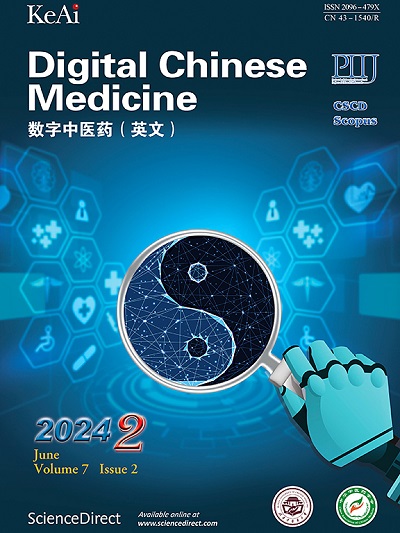Construction and optimization of traditional Chinese medicine constitution prediction models based on deep learning
Q3 Medicine
引用次数: 0
Abstract
Objective
To cater to the demands for personalized health services from a deep learning perspective by investigating the characteristics of traditional Chinese medicine (TCM) constitution data and constructing models to explore new prediction methods.
Methods
Data from students at Chengdu University of Traditional Chinese Medicine were collected and organized according to the 24 solar terms from January 21, 2020, to April 6, 2022. The data were used to identify nine TCM constitutions, including balanced constitution, Qi deficiency constitution, Yang deficiency constitution, Yin deficiency constitution, phlegm dampness constitution, damp heat constitution, stagnant blood constitution, Qi stagnation constitution, and specific-inherited predisposition constitution. Deep learning algorithms were employed to construct multi-layer perceptron (MLP), long short-term memory (LSTM), and deep belief network (DBN) models for the prediction of TCM constitutions based on the nine constitution types. To optimize these TCM constitution prediction models, this study introduced the attention mechanism (AM), grey wolf optimizer (GWO), and particle swarm optimization (PSO). The models’ performance was evaluated before and after optimization using the F1-score, accuracy, precision, and recall.
Results
The research analyzed a total of 31 655 pieces of data. (i) Before optimization, the MLP model achieved more than 90% prediction accuracy for all constitution types except the balanced and Qi deficiency constitutions. The LSTM model's prediction accuracies exceeded 60%, indicating that their potential in TCM constitutional prediction may not have been fully realized due to the absence of pronounced temporal features in the data. Regarding the DBN model, the binary classification analysis showed that, apart from slightly underperforming in predicting the Qi deficiency constitution and damp heat constitution, with accuracies of 65% and 60%, respectively. The DBN model demonstrated considerable discriminative power for other constitution types, achieving prediction accuracy rates and area under the receiver operating characteristic (ROC) curve (AUC) values exceeding 70% and 0.78, respectively. This indicates that while the model possesses a certain level of constitutional differentiation ability, it encounters limitations in processing specific constitutional features, leaving room for further improvement in its performance. For multi-class classification problem, the DBN model’s prediction accuracy rate fell short of 50%. (ii) After optimization, the LSTM model, enhanced with the AM, typically achieved a prediction accuracy rate above 75%, with lower performance for the Qi deficiency constitution, stagnant blood constitution, and Qi stagnation constitution. The GWO-optimized DBN model for multi-class classification showed an increased prediction accuracy rate of 56%, while the PSO-optimized model had a decreased accuracy rate to 37%. The GWO-PSO-DBN model, optimized with both algorithms, demonstrated an improved prediction accuracy rate of 54%.
Conclusion
This study constructed MLP, LSTM, and DBN models for predicting TCM constitution and improved them based on different optimisation algorithms. The results showed that the MLP model performs well, the LSTM and DBN models were effective in prediction but with certain limitations. This study also provided a new technology reference for the establishment and optimisation strategies of TCM constitution prediction models,and a novel idea for the treatment of non-disease.
基于深度学习的中药体质预测模型构建与优化
目的通过调查中医体质数据的特点,构建模型,探索新的预测方法,从深度学习的角度满足个性化健康服务的需求。方法收集成都中医药大学学生在2020年1月21日至2022年4月6日期间,按24节气进行数据整理。利用数据对9种中医体质进行鉴定,包括平衡体质、气虚体质、阳虚体质、阴虚体质、痰湿体质、湿热体质、瘀血体质、气滞体质和特定遗传易感体质。采用深度学习算法构建多层感知器(MLP)、长短期记忆(LSTM)和深度信念网络(DBN)模型,基于9种体质类型对中医体质进行预测。为了优化中药体质预测模型,本研究引入了注意机制(AM)、灰狼优化器(GWO)和粒子群优化(PSO)。采用f1评分、准确率、精密度和召回率对模型优化前后的性能进行评价。结果本研究共分析了31 655份数据。(i)优化前,除平衡体质和气虚体质外,MLP模型对所有体质类型的预测准确率均在90%以上。LSTM模型的预测精度超过60%,表明由于数据中缺乏明显的时间特征,LSTM模型在中医体质预测中的潜力可能没有得到充分发挥。DBN模型在预测气虚体质和湿热体质方面的准确率分别为65%和60%,二元分类分析结果显示,DBN模型在预测气虚体质和湿热体质方面表现略差。DBN模型对其他体质类型具有较强的判别能力,预测准确率超过70%,受试者工作特征曲线下面积(AUC)超过0.78。这说明该模型虽然具有一定的体质区分能力,但在处理特定体质特征方面存在一定的局限性,其性能还有进一步提升的空间。对于多类分类问题,DBN模型的预测准确率不足50%。(ii)优化后,经AM增强的LSTM模型的预测准确率一般在75%以上,但对气虚体质、瘀血体质、气滞体质的预测准确率较低。gwo优化后的DBN模型对多类分类的预测准确率提高到56%,而pso优化后的模型预测准确率下降到37%。两种算法优化后的GWO-PSO-DBN模型预测准确率提高了54%。结论本研究构建了中医体质预测的MLP、LSTM和DBN模型,并基于不同的优化算法对模型进行了改进。结果表明,MLP模型具有较好的预测效果,LSTM和DBN模型具有较好的预测效果,但存在一定的局限性。本研究也为中医体质预测模型的建立和优化策略提供了新的技术参考,为非疾病治疗提供了新的思路。
本文章由计算机程序翻译,如有差异,请以英文原文为准。
求助全文
约1分钟内获得全文
求助全文
来源期刊

Digital Chinese Medicine
Medicine-Complementary and Alternative Medicine
CiteScore
1.80
自引率
0.00%
发文量
126
审稿时长
63 days
期刊介绍:
 求助内容:
求助内容: 应助结果提醒方式:
应助结果提醒方式:


